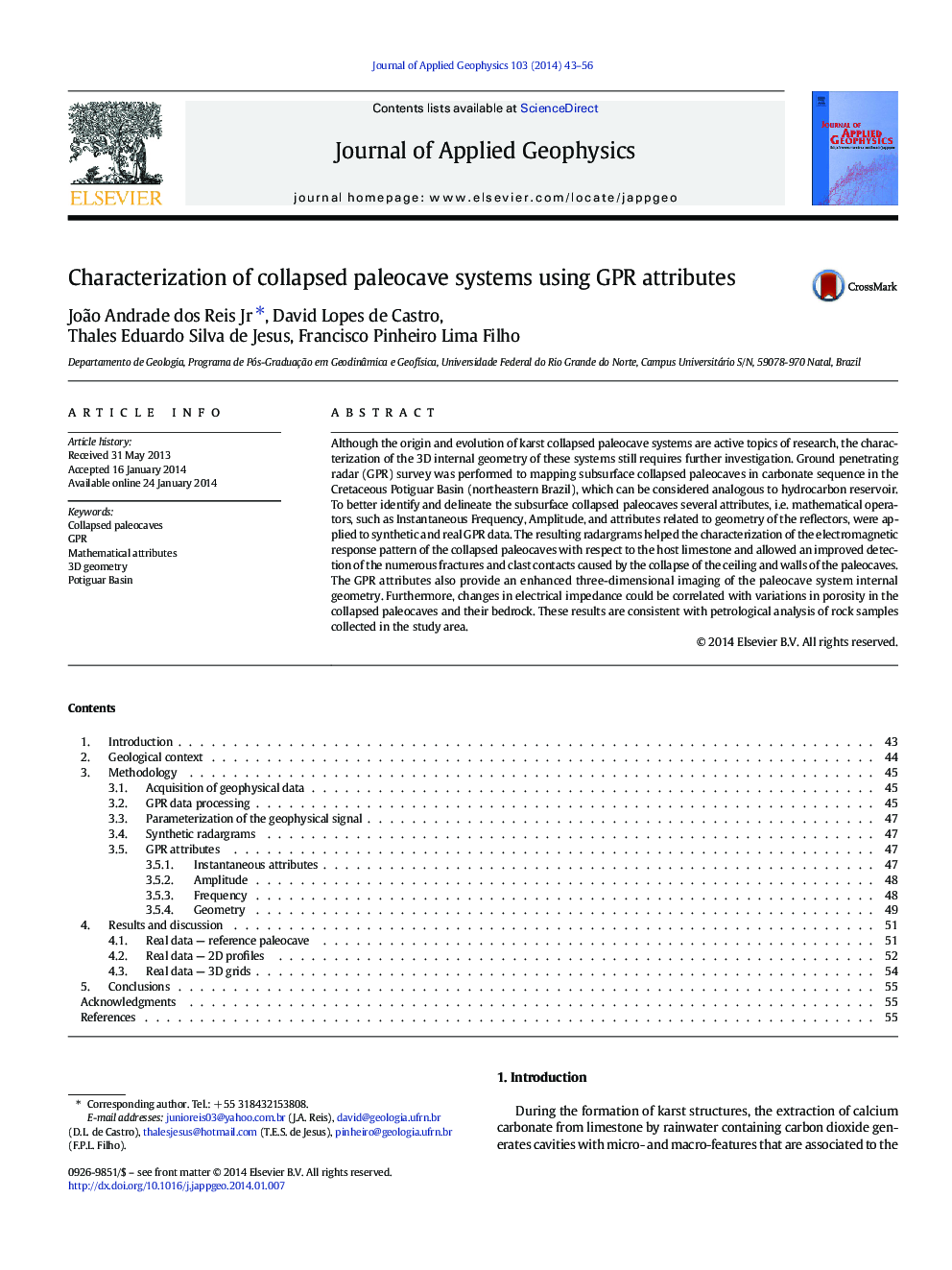| Article ID | Journal | Published Year | Pages | File Type |
|---|---|---|---|---|
| 4740294 | Journal of Applied Geophysics | 2014 | 14 Pages |
•System of collapsed paleocaves is investigated in NE Brazil.•Synthetic and real GPR data were carried out, processed, and interpreted.•Mathematical attributes are applied to GPR data.•GPR attributes enhanced EM signatures of the collapsed paleocaves.•3D geometry of the collapsed paleocaves was imaged.
Although the origin and evolution of karst collapsed paleocave systems are active topics of research, the characterization of the 3D internal geometry of these systems still requires further investigation. Ground penetrating radar (GPR) survey was performed to mapping subsurface collapsed paleocaves in carbonate sequence in the Cretaceous Potiguar Basin (northeastern Brazil), which can be considered analogous to hydrocarbon reservoir. To better identify and delineate the subsurface collapsed paleocaves several attributes, i.e. mathematical operators, such as Instantaneous Frequency, Amplitude, and attributes related to geometry of the reflectors, were applied to synthetic and real GPR data. The resulting radargrams helped the characterization of the electromagnetic response pattern of the collapsed paleocaves with respect to the host limestone and allowed an improved detection of the numerous fractures and clast contacts caused by the collapse of the ceiling and walls of the paleocaves. The GPR attributes also provide an enhanced three-dimensional imaging of the paleocave system internal geometry. Furthermore, changes in electrical impedance could be correlated with variations in porosity in the collapsed paleocaves and their bedrock. These results are consistent with petrological analysis of rock samples collected in the study area.
